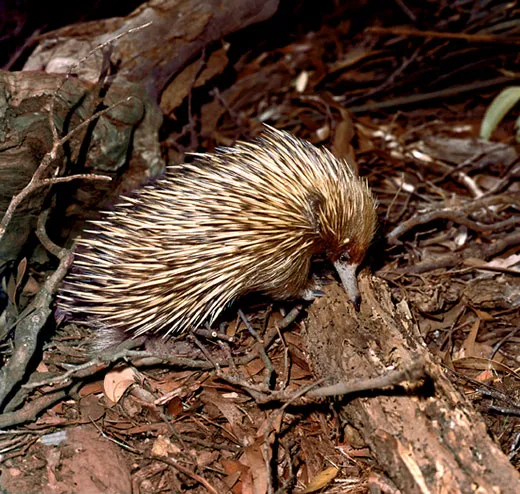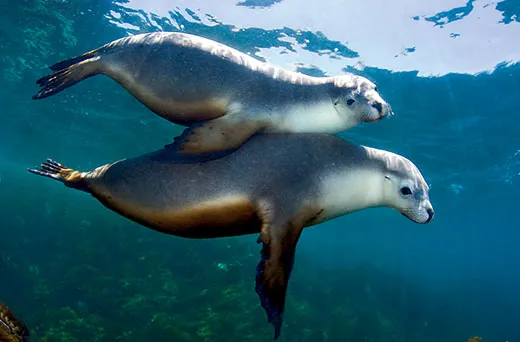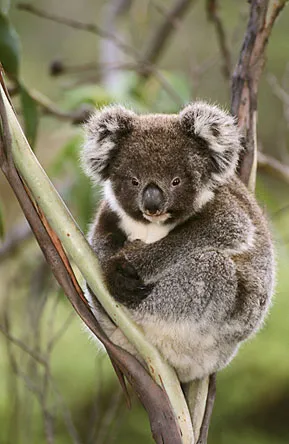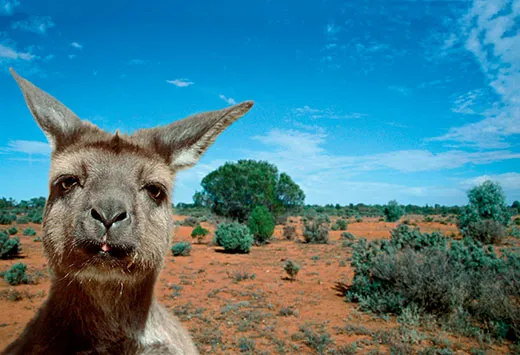Evolution World Tour: Kangaroo Island, Australia
Mammals come in three types and the best place to see them all in one place is this small island off the southern coast of Australia
/https://tf-cmsv2-smithsonianmag-media.s3.amazonaws.com/filer/evotourism-Kangaroo-Island-Australia-631.jpg)
Think about the tremendous diversity of mammals in the world: giraffes gamboling across the African savanna, wide-eyed lemurs climbing trees in Madagascar, narwhals poking their unicorn horns through the Arctic ice. They may seem to have little in common, but evolutionarily speaking, their differences are trivial.
There are really only three ways to be a mammal, an animal characterized by hair, milk, a fused lower jaw and three bones in the middle ear. What distinguishes one mammal from another is how it bears its young. Giraffes, lemurs, narwhals and humans are all placental mammals, gestating fetuses internally. Marsupials, such as kangaroos, give birth to underdeveloped offspring that in many species climb into a pouch to suckle. And monotremes, the oldest, weirdest and rarest of the mammal lineages, which includes the duck-billed platypus, lay eggs.
Perhaps the best site in the world to see all three types of mammals in one place is Kangaroo Island, just off the southern coast of Australia. While placental mammals dominate the rest of the world, evolution has taken a different turn here. On the Australian landmass, which floated free of other continents about 40 million years ago, marsupials dominate. Kangaroo Island itself split off from Australia some 10,000 years ago, protecting the island from much of the recent hunting, land clearing and invasive species that accompanied human settlement of Australia.
The 100-mile-long island, a wildlife sanctuary, is a 45-minute ferry ride from the coast near Adelaide; it has hotels, campgrounds and restaurants serving delicious local seafood. An extensive trail system leads through the island’s forests, cliffs, beaches, caves and kooky rock formations. Kangaroo Island has a few placental mammals, mostly sea lions and fur seals, which loll and bark along the beach. But never mind—the marsupials are more interesting. The island is hopping with kangaroos and wallabies and packed with eucalyptus-leaf-munching koalas. Although koalas are endangered in some parts of Australia, they are so abundant here the eucalyptus forest can barely support them.
And then there are the mammalian world’s evolutionary holdouts, the monotremes. Only two types remain, and members of both can be found on Kangaroo Island: the short-beaked echidna and the duck-billed platypus. Echidnas, also known as spiny anteaters, look like a cross between a porcupine and a hedgehog. Their sight and hearing aren’t great, so it’s easy to sneak up on one skulking in the underbrush. The duck-billed platypus is so absurd the British naturalist George Shaw, upon obtaining a specimen in 1799, wondered whether it was a hoax. The flat beak contains sensors that allow the platypus to detect electrical activity generated by the movements of crustaceans and other prey in murky water. Females ooze milk for their young from patches of skin on their bellies. Males have venom-producing spurs on their hind legs that they use to fight each other.
Mammals evolved more than 200 million years ago, during the Triassic period, and monotremes were among the first (the very earliest mammals or mammal-like animals have since died out). Placental and marsupial mammals appeared during the Jurassic, sometime between 200 million and 160 million years ago.
To succeed, as far as evolution is concerned, is to produce a lot of offspring that survive to produce offspring. Among mammals, placenta and pouch proved more successful than eggs. Placental mammals invest the most time and energy (nutrients from their own bodies) during pregnancy, which is why placental offspring are relatively well developed at birth. Marsupials have more flexibility, which might explain why they fared so well in Australia, a continent that drifted rapidly through different latitudes and experienced a lot of climate change over the past 40 million years or so. More of a mother marsupial’s time and energy is invested only after a fetus is born and reaches the pouch. “The advantage of marsupial reproduction is that females...lose little if the offspring don’t survive,” says Karen Roberts, a paleontologist at Museum Victoria in Melbourne.
Visiting Kangaroo Island is like going to a family reunion and meeting our most distant cousins; we share some common ancestors but our lives have diverged in unexpected ways. “One of the most wonderful things about seeing all three living mammal lineages is being able to see the end result of millions of years of evolution,” says Roberts. “What never ceases to amaze me is the astonishing diversity and disparity of form and function displayed by all three groups of mammals.”
/https://tf-cmsv2-smithsonianmag-media.s3.amazonaws.com/accounts/headshot/laura-helmuth-240.jpg)





/https://tf-cmsv2-smithsonianmag-media.s3.amazonaws.com/accounts/headshot/laura-helmuth-240.jpg)